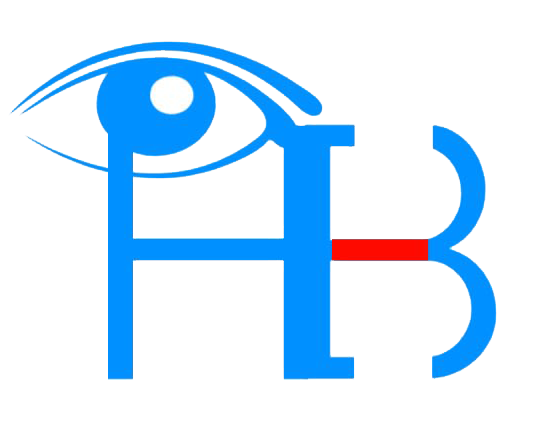It is important to take care of your eyes but more important to take care of your general health. Every part of your body is interconnected, which implies that your general health condition can have an impact on the health of your eyes or pose a threat to your eyesight. To some extent, some of these conditions are within your control, preventable and/or manageable. Let’s take a look at these conditions.
Diabetes
Diabetes is a common medical condition which if not diagnosed early and managed, could have a devastating effect on a patient’s overall health and eyesight. Diabetic patients must inform their eye-care practitioner of their condition and blood sugar level before eye examination is done. High blood sugar level could lead to blurry vision or visual fluctuation with and without spectacles. This often lead to unstable spectacle lens prescription and visual discomfort. A diabetic patient should therefore ensure that his/her blood sugar level is stable and within the normal range before eye examination. Blood sugar level of less than 146mg is ideal for an eye test.
Complication of diabetes could in some cases leave a visible sign at the back of the eyes which may be detected during eye examination. This condition is known as diabetic retinopathy (D-R). At an early stage, D-R causes retinal blood vessels damage resulting in blood/fluid leak. At a later or advanced stage, the disease results in total blood vessel damage with an appearance of new fragile and weak retinal vessels and more blood leak (retinal hemorrhage). If diabetic retinopathy is not treated, it could gradually lead to significant vision loss or blindness. Although not every diabetic patient develops D-R, they are all at risk of developing It.
To reduce the risk of developing this condition, diabetic patients should take a proactive step by visiting an eye care professional ( Optometrist and Ophthalmologist ) for regular eye examination which should be done yearly if the eyes are healthy and with no ocular complications. If not, it should be done more often or as advised by an eye doctor. Nevertheless “prevention, they say, is better than cure”. I strongly advise that diabetic patients keep their blood sugar level under control by doing whatever it takes – eat healthy, exercise, visit a general practitioner for medical check up and adhere to their medical advise and recommendations.
However, Diabetic retinopathy could be treated using laser or other medical approach by an ophthalmologist.
High Blood Pressure
High and Uncontrolled blood pressure could lead to hypertension which, if not managed, could result to an eye condition called hypertensive retinopathy. Like diabetes, this condition could damage the retina blood vessels. This makes the blood vessels get unhealthily narrow, bleed and leave the retina with a flame-shaped haemorrhage and affect the level and clarity of your vision If not treated. As a result of this complication and if diagnosed too late, glasses may not be satisfactorily helpful.
Patients with hypertensive retinopathy may not know until its detected during eye examination. However the patients may experience headaches more often on the top/central part of their head .
The best preventive approach of hypertensive retinopathy is to keep your blood pressure under control by following your doctor’s recommendations and advice.
Cholesterol
The body needs some level of cholesterol to function. Abnormally high level of cholesterol could build up on the walls of the arteries and effect your health. If this is not detected early and controlled, cholesterol deposits may appear on the retina ( back of the eyes ) and pose a threat to your vision. However, at an early stage, eyesight may not obviously be affected. But if not detected or uncontrolled, abnormally high level of cholesterol could leave lipid deposits in the retina veins and eventually block it or cause it to rupture. When this happens, Blood and nutrient supply to the retina is cut off resulting in retinal vein occlusion and sudden painless vision loss.
Cholesterol deposits may not always be visible on the retina for your eye doctor to see. However there may be other warning signs of high cholesterol that your eye care practitioner could detect during eye examination. Some of them are
Cornea Arcus –This is a white-grayish discoloration on the outer circumference of the cornea. Although Arcus may be a warning sign of hyper cholesterolemia, it may be due to ageing process of the eyes for some patients. Arcus does not affect eyesight or cause any eye discomfort, although it could be a cosmetic concern for some people.
Xanthelasma –( pronounced – zan-te-lasma. ) This is a yellowish, soft, small and lumpy lipid deposits on the corners of the eyelids. This is not the case for every patient with high cholesterol, but quite common with those with lipid disorder- ( dyslipidemia ). Xanthelasma does not affect vision and requires no treatment, however the yellow lumpy deposits could be removed for cosmetic reasons if so desired.
My advise is to keep cholesterol level under control by following your doctor’s advise.
Thyroid
Hyperthyroidism— is simply a medical condition where the body ( the thyroid gland ) produces more thyroid than the body needs. If not diagnosed early and managed, it could lead to weakness of the eye muscles and bulgy eye balls – an eye condition known as proptosis. Proptosis could lead to unstable vision and frequent lens prescription change. It is important to know that even when hyperthyroidism is treated, proptosis remains the same. In other words, ‘bulgy eyeball’ due to the disease is not influenced by the treatment of the disease.
Written By;
Austin Madu, OD
( Optometrist )


Recent Comments